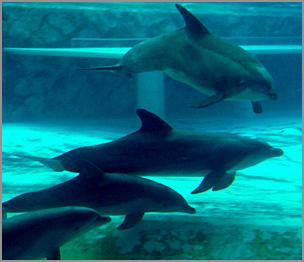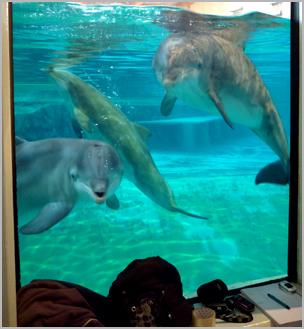Background

Studies on various species have shown that the individuals observed were not behaving the same way. They displayed individual patterns of behaviours that were consistent over time and situations, something that has been defined as personality. There is a growing interest in exploring the personality of animals, especially in zoos, with welfare being one of the main goals.
In human personality studies methods based on surveys, life stories, etc. can be implemented.
In animals studies survey based methods have been applied by letting people that know the animals well rate them according to certain parameters. An alternative way of investigating animal personality is by analysing their behaviours from observation sessions, a method called behavioural coding.
It has been stated that the Five-factor model is the best way of analysing human personality. With some modifications this model also works well for non-human animals. The factors are broad enough to constitute of most personality traits. The factors are Openness to experience, Conscientiousness, Extraversion, Agreeableness and Neuroticism. Examples of traits, that works for dolphins, in the Openness to experience factor are adventurous, imaginative and curious. Conscientiousness can consist of traits that e.g. show planned behaviour or self-discipline. Traits such as energetic and a tendency to seek stimulation belong to the factor Extraversion. Agreeableness is characterized by friendliness and a tendency to be co-operative. Finally Neuroticism consists of a tendency to experience uncomfortable emotions, such as aggression or anxiety. The five factors can consist of both "positive" and "negative" traits that belong to the same factor. For example: In the factor Openness to experience traits such as curiosity is positive while not exploratory is negative. In the same way Neuroticism is positive for traits such as aggressive while calm is negative.

When considering welfare, zoo management, etc. in social species such as dolphins it is also of interest to investigate how the individuals interact. The personality profiles created based on the Five-factor model does not say anything about how the individuals interact with each other which is an important aspect as well. For best overall assessment sociograms and coefficients of association should be included. Calculating the coefficients of association provide a statistical overview of who the dolphins interact with the most. Sociograms display the ways dolphins interact with each other.
The aim of this study was to investigate whether differences in personality can be assessed in a group of eight captive bottlenose dolphins (Tursiops truncatus) based on behavioral codings and the Five-factor model as well as investigate how the individuals interact within the group.
Responsible for this page:
Director of undergraduate studies Biology
Last updated:
05/18/11
